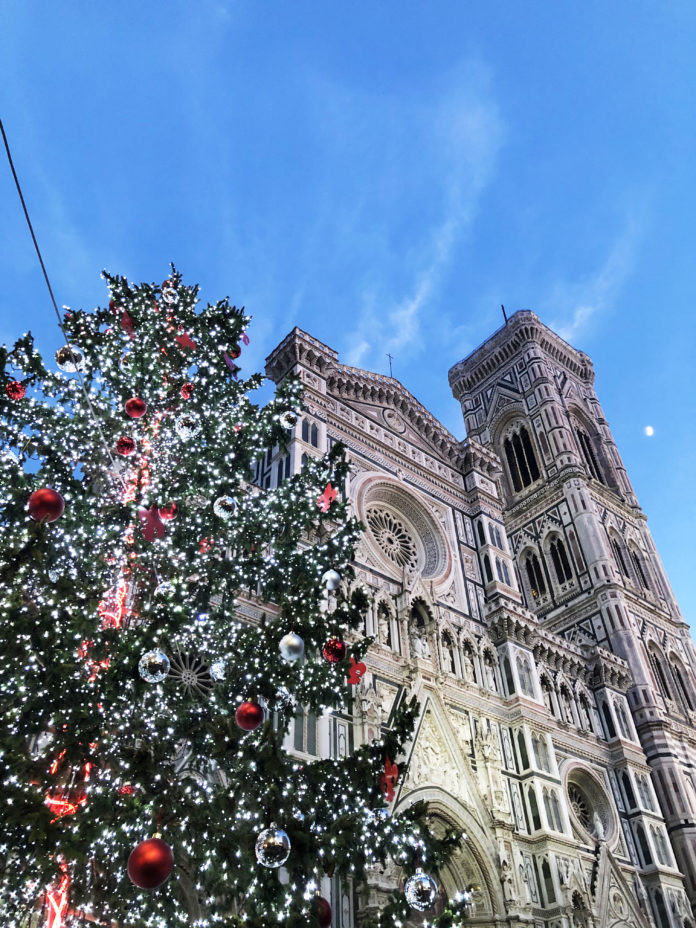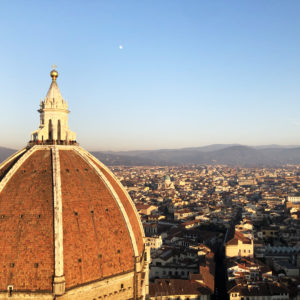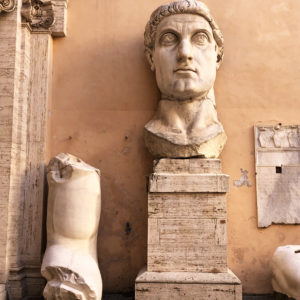
Students from professor Eric Frank’s art history class “Michelangelo: Art and Biography” (ARTH 373) finished their semester-long coursework with a trip to Italy, according to Isabel Sung (senior). Frank’s class explores the paintings, sculptures, urban planning and life of Michelangelo Buonarroti. The 14 students spent two weeks with Frank in his last year at Occidental before his retirement.
Led by Frank every two years, the trip covers many historical and artistic sites in Florence, Siena, Orvieto and Rome, such as the Museo dell’Opera del Duomo, the Brancacci Chapel and the Sistine Chapel. Frank has led the trip for four of his 35 years at Occidental. The class, intended mostly for art history majors or minors, requires early enrollment and an application, according to Frank.
Frank has spent around 12 years total in Italy, including five years in Rome doing research under a fellowship. According to Frank, in his last year at Occidental, he is teaching five classes about subjects that are the most important to him, such as “Art of the Early Italian Renaissance,” “Greek and Roman Art” and “Early European Art,” as well as a senior seminar.
Frank said he wanted a special group of students for his last trip with Occidental. Sung said she had only taken one art history class before applying to ARTH 373.
“It was nerve-wracking because on the application it said, ‘You have to have a few art history classes under your belt,’ and I was just like, ‘I’ve only taken one, I’ve never met Frank before, but the class sounds so interesting,’” Sung said. “I was very scared, and really uncertain whether or not to do it. In the end, I got it, and I learned so much about Michelangelo that I never thought I would have learned.”

Art and art history major Gaby Verdolini (senior) said she enjoys learning about the Renaissance, but had never intensely studied Michelangelo before the trip.
“I had never taken a class on Michelangelo, and he’s such an icon on a Leonardo da Vinci level of fame,” said Verdolini.
According to Verdolini, who did not study abroad, the trip was a unique opportunity to learn through the context of other countries.
In addition to their visual learning, the class also had looking assignments due every day, which consisted of a written analysis of the work they viewed that day.
According to Isabel Norsten (senior), Frank would join the students at their hostel or hotel every morning. They would then travel to their museum or site with a break for lunch. The students also had free time at night to explore the various cities in groups.
Frank said he used a microphone to give lectures as students — who were wearing auditory listening devices — moved around the museum.

According to Frank, traveling to Italy makes all of Michelangelo’s art more accessible.
“It just so happens that because of Michelangelo’s work and the way his work has survived, you can see almost 90 percent of everything that he either made or designed,” Frank said.
The trip also involved a lot of walking, especially around Florence and through parts of Rome. Frank said several students tracked how far they walked, and found that the group had walked over 100 miles during the two weeks.
Norsten said the whole experience renewed her love for art.
“I think this trip really reminded me of what the joys of looking at art are, which, oddly enough, can sometimes be forgotten,” Norsten said. “I love talking to people about art. A lot of my many meaningful relationships are with people who also care about art and the ways that we connect over our different perspectives.”
According to Deidre Ellis (sophomore), the class material did not fully sink in until the students were in Italy.
“Sitting in Weingart 110 at three o’clock in the afternoon in LA, and professor Frank being like, ‘This is the Bacchus and here’s some information, but I’m not going to tell you everything because you’re going to see it in Italy,’ doesn’t seem like a real thing until you’re actually there,” Ellis said.
Seeing art in person is much different than looking at a picture in class, Norsten said. She analogized seeing Michelangelo’s works in person to listening to her favorite song for the first time.
Ellis said the trip was the epitome of a liberal arts experience.
“You get to have these wonderful experiences with small groups and really feel like you’re getting your money’s worth,” Ellis said.
The class also became closer throughout the trip. Many friendships that were initially formed in class blossomed throughout the trip, according to Rory Hayes (junior). Hayes said they often got dinner with different groups of students.
“I was friendly with people in the class, but I didn’t know them super well. And then when we first got to Italy, we were living in rooms of four for a week and right next to each other in the hostel,” Ellis said. “I really did like feel at the end that I had made like a bunch of friends within my major and within the humanities.”
Since returning to campus, their relationships with their classmates have changed once again. According to Ellis, seeing classmates in their campus context is weird.
“We live together and I’m like, ‘I know your shower habits and morning schedules,’” Ellis said. “Then to see somebody on the quad with their other friends, it’s kind of like, ‘Hey.’”
According to Frank, the highlight for many of the students was an Italian cooking class, which was a nice change in pace from their art history-filled trip.
Frank referred to the whole trip as dream-like.
“By simply making a long airplane ride, you’re in a place that is 100 percent different, and then you’re in this place intensely for 15 days,” Frank said. “You come back to LA and the sights and sounds and stimulation you get on the street in Italy are just not here. We come back to LA, it just all seems like a dream.”
Ellis said there were moments in which Frank took them to destinations he had not covered on his previous trips. Frank said one spot he pointed out was a historical plaque noting the arrest of seven Jews prior to World War II.
The students speak highly of him, and many have taken classes with him throughout their time at Occidental. With Frank’s impending retirement and the many hours spent with students, they all saw a different side of him, according to Verdolini.
“To get to know your professor on more than an academic level through the personal relationship was also fulfilling,” Verdolini said.
According to Norsten, their talks with Frank were often filled with questions about his career, retirement and past students.
“We’d sit down at a group dinner and like, it was a lot of like reflective questions,” Norsten said. “Which is a kind of sad because there’s this kind of final feeling.”
At the end of the trip, Frank ended with several words to wrap up their time together, also touching upon the end of his Michelangelo class.
“He’s a very sweet, emotional guy, but I don’t think he does very well with goodbyes,” Hayes said.
Frank said the trip was a beautiful way to gain closure on his time at Occidental. Moving past the college, he said he will continue to be an art historian and appreciate art.
“It was a wonderful final experience because it was just really a personal and a pedagogical joy,” Frank said.
![]()


































